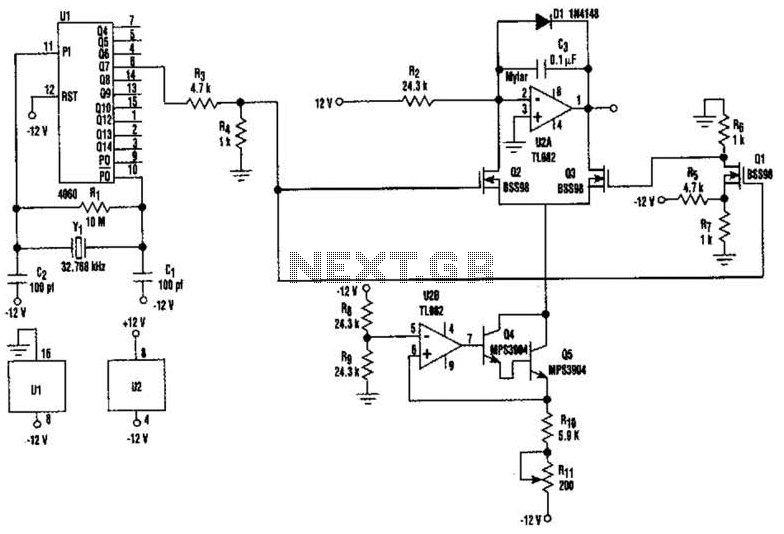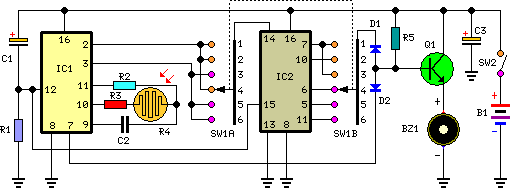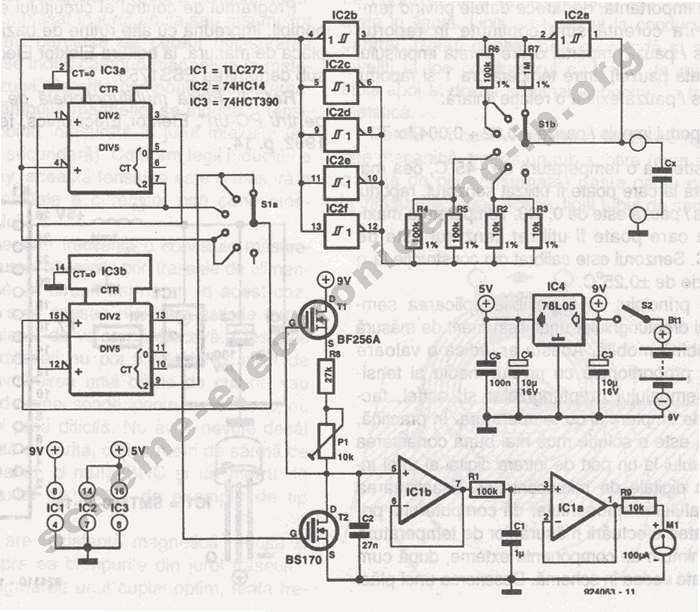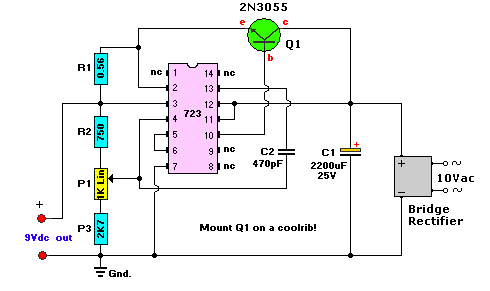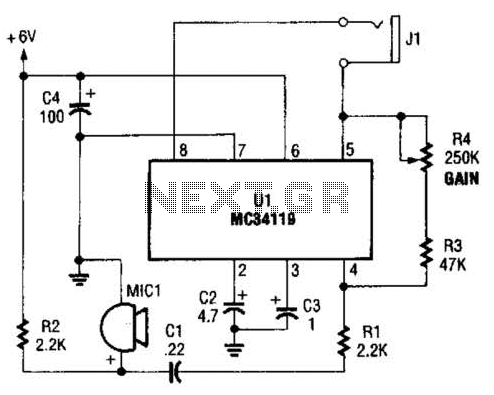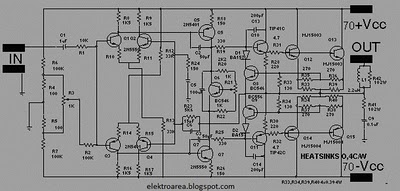
Schematic Diagram LM1877 Audio power amplifier circuit
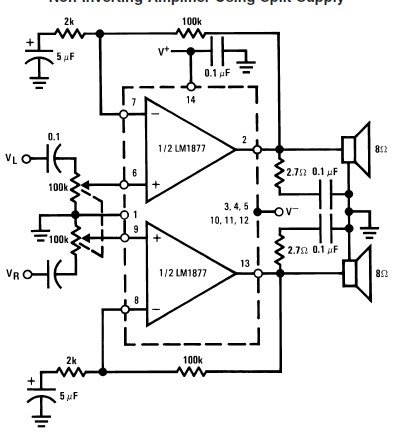
This audio amplifier circuit is designed to deliver 2W per channel continuously into 8-ohm loads. The LM1877 is engineered to function with a minimal number of external components while still offering flexibility for applications in stereo phonographs, tape recorders, AM-FM stereo receivers, and similar devices. Each power amplifier is biased from a common internal regulator to provide high power supply rejection and output quiescent point centering. The LM1877 is internally compensated for all gains greater than 10.
The audio amplifier circuit utilizes the LM1877 integrated circuit, which is specifically tailored for low-power audio amplification applications. The design ensures efficient operation while maintaining sound quality, making it suitable for various consumer audio devices. The output stage of the LM1877 is capable of delivering 2 watts of power per channel, which is adequate for driving typical 8-ohm speakers in home audio systems.
The internal architecture of the LM1877 includes a built-in voltage regulator that stabilizes the power supply, thereby enhancing the amplifier's performance by minimizing noise and distortion that could arise from fluctuations in the power source. This feature is particularly beneficial in portable devices where battery voltage can vary significantly. The common biasing approach for the power amplifiers ensures that the output quiescent point is centered, which optimizes the linearity of the output signal and reduces crossover distortion.
The internal compensation for gains greater than 10 allows the LM1877 to be versatile in various applications, providing a stable frequency response across a range of operating conditions. This characteristic is crucial for maintaining audio fidelity, especially in high-gain scenarios where phase shifts could lead to instability.
Overall, the LM1877 audio amplifier circuit is a robust solution for achieving high-quality audio amplification in compact designs, requiring fewer external components while providing reliability and flexibility across a range of audio applications.This audio amplifier circuit is designed to deliver 2W per channel continuous into 8 © loads. The LM1877 is designed to operate with a low number of external components, and still provide flexibility for use in stereo phonographs, tape recorders and AM-FM stereo receivers, etc. Each power amplifier is biased from a common internal regulator to pro vide high power supply rejection, and output Q point centering. The LM1877 is internally compensated for all gains greater than 10. 🔗 External reference
The audio amplifier circuit utilizes the LM1877 integrated circuit, which is specifically tailored for low-power audio amplification applications. The design ensures efficient operation while maintaining sound quality, making it suitable for various consumer audio devices. The output stage of the LM1877 is capable of delivering 2 watts of power per channel, which is adequate for driving typical 8-ohm speakers in home audio systems.
The internal architecture of the LM1877 includes a built-in voltage regulator that stabilizes the power supply, thereby enhancing the amplifier's performance by minimizing noise and distortion that could arise from fluctuations in the power source. This feature is particularly beneficial in portable devices where battery voltage can vary significantly. The common biasing approach for the power amplifiers ensures that the output quiescent point is centered, which optimizes the linearity of the output signal and reduces crossover distortion.
The internal compensation for gains greater than 10 allows the LM1877 to be versatile in various applications, providing a stable frequency response across a range of operating conditions. This characteristic is crucial for maintaining audio fidelity, especially in high-gain scenarios where phase shifts could lead to instability.
Overall, the LM1877 audio amplifier circuit is a robust solution for achieving high-quality audio amplification in compact designs, requiring fewer external components while providing reliability and flexibility across a range of audio applications.This audio amplifier circuit is designed to deliver 2W per channel continuous into 8 © loads. The LM1877 is designed to operate with a low number of external components, and still provide flexibility for use in stereo phonographs, tape recorders and AM-FM stereo receivers, etc. Each power amplifier is biased from a common internal regulator to pro vide high power supply rejection, and output Q point centering. The LM1877 is internally compensated for all gains greater than 10. 🔗 External reference
